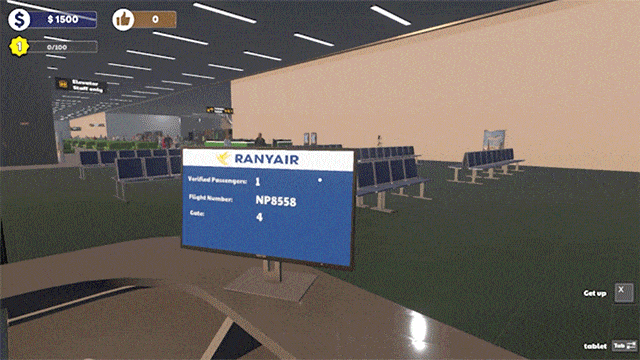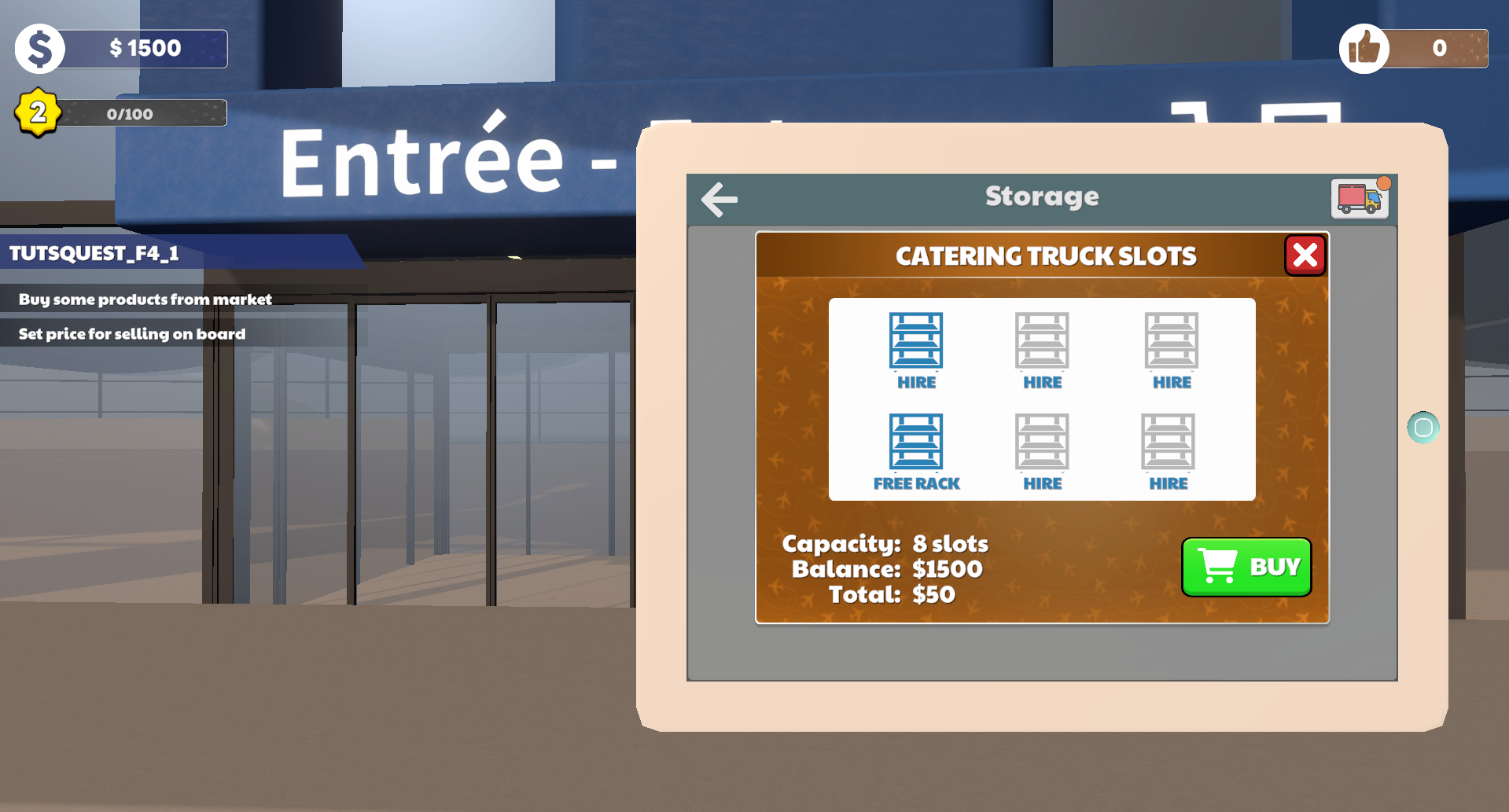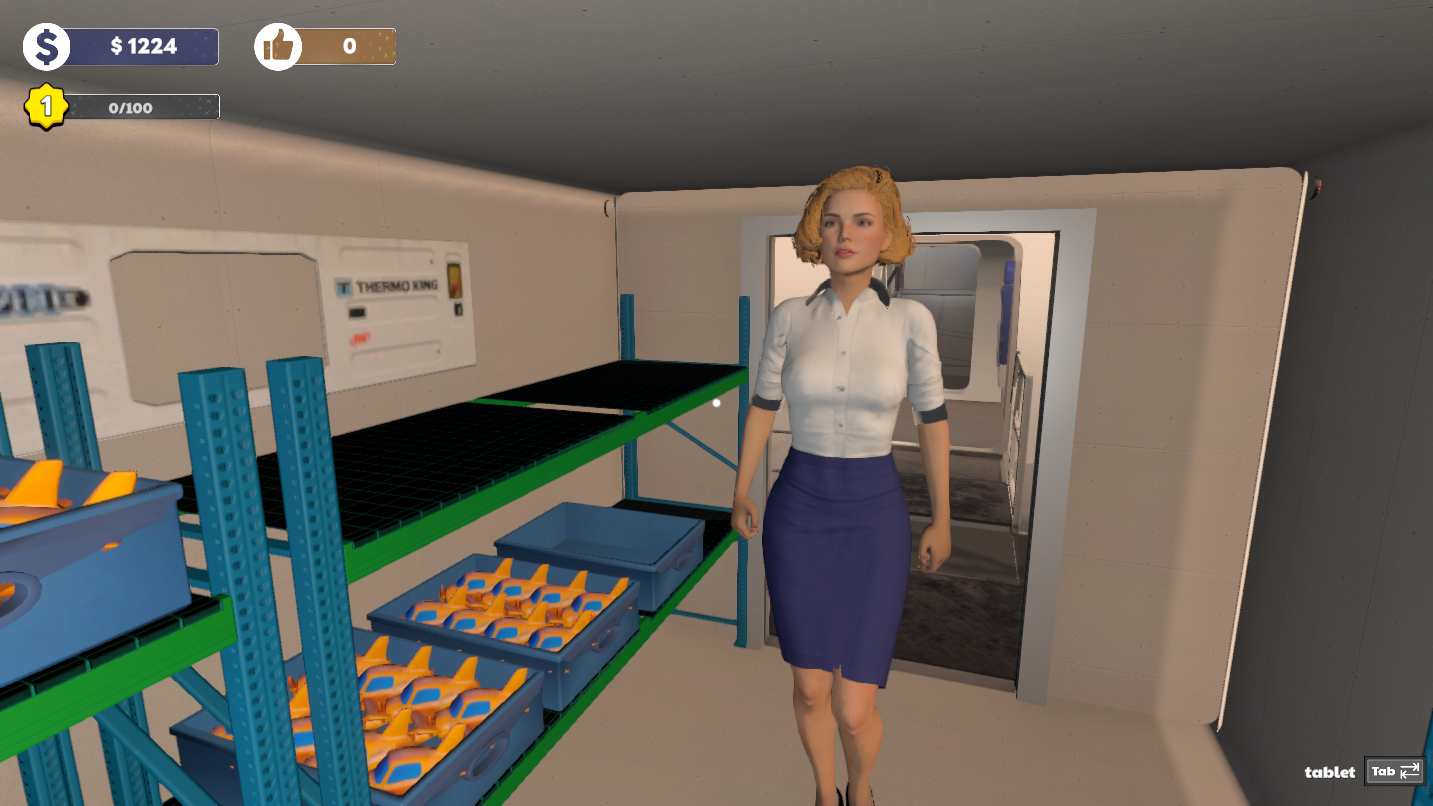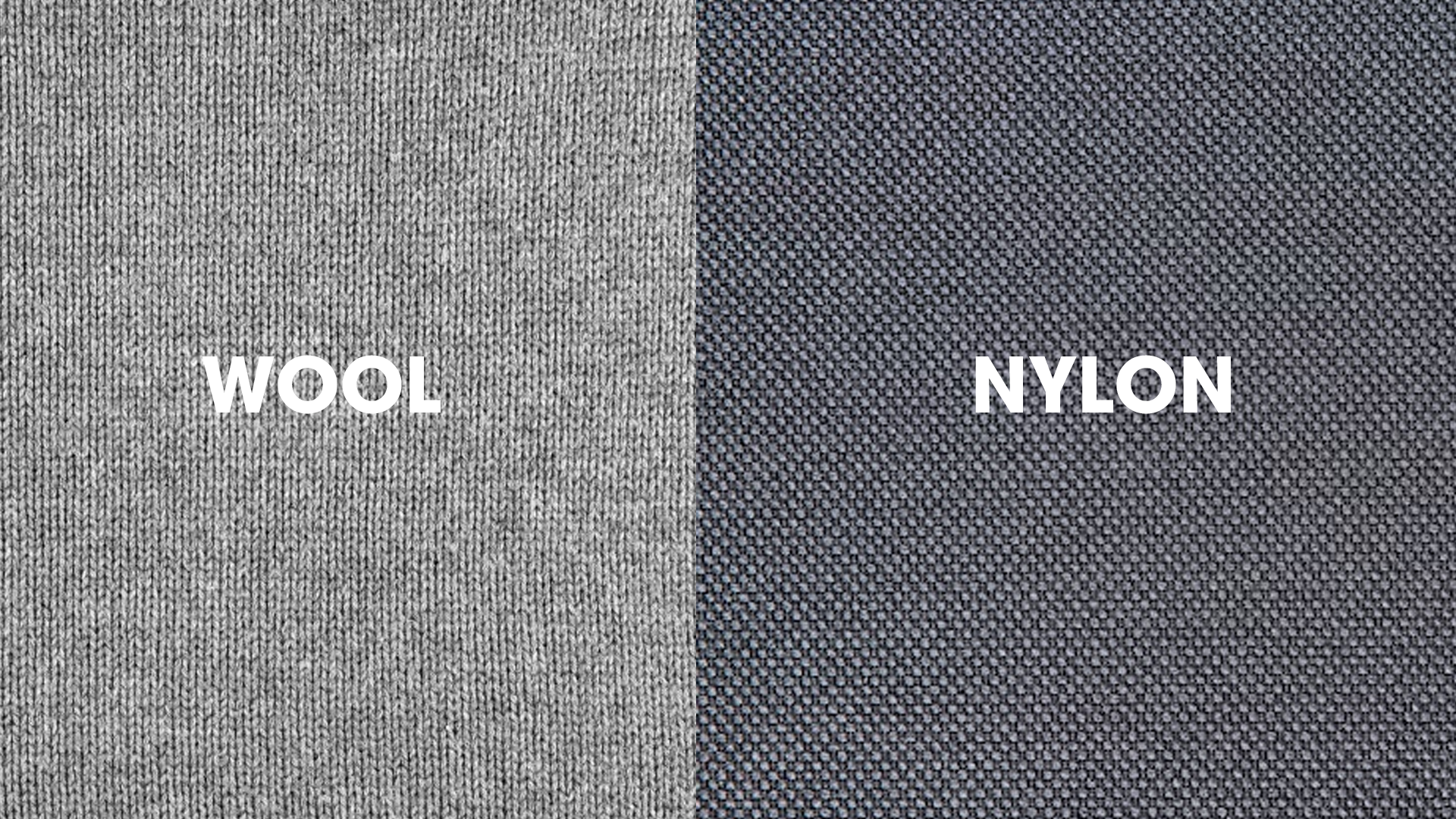Hello everyone!
I hope you're all doing well! First of all, I would like to sincerely thank everyone for the great feedback we’ve received with each new Devlog. Your contributions have really helped us refine some tricky aspects, and it’s been amazing to have such a supportive community. This week, I’ll be talking about the Task System in the game. It’s not only the backbone of the game but also what helps players truly feel the life of a flight attendant.
1. Basic Tasks: Getting Familiar with the Job
When we started development, we asked ourselves: How do we make simple tasks like getting familiar with the cabin interesting, and how can players who’ve never flown imagine the work of a flight attendant? We all know that tutorials are often the "dry" part of a game, but we didn’t want players to feel bored right from the start. After many iterations, we completed a "training" task system that allows players to get familiar with the cabin environment.
We designed a small tutorial where players are guided on how to move around the aircraft, check seats, interact with passengers, and learn the locations of safety equipment. The key thing is to make players feel the importance of communication in the cabin and familiarize themselves with the kitchen space.

At first, the interphone was just simple buttons, but later, we added small scenarios like receiving instructions from the pilot or announcing flight status to passengers. To create a connection between the flight attendants and the pilots, we added short dialogues where the pilot provides important information like bad weather or requests for cabin checks.
In a previous devlog, I also wrote in detail about this. And you’ll also provide feedback about the cabin’s situation to the pilot. Sounds interesting, right? You’ll understand that communication between cabin crew members is the key to everything running smoothly.

2. Upgrading and Expanding Tasks
Once players get familiar with basic tasks, they’ll start asking themselves:
- How do we make players feel like they’re continuously experiencing new tasks and not getting stuck in repetitive ones?
We know that without progression, players will quickly lose interest. Therefore, we’ve designed an upgraded task system, where players gradually face more complex challenges, requiring skill and creativity.
- Operating the FAP (Flight Attendant Panel)
Initially, the FAP (Flight Attendant Panel) was just a simple interface with a few basic buttons. Players only needed to press a button to adjust lighting or temperature in the cabin. However, after several brainstorming sessions, we realized this system needed to be more complex and interesting to reflect the real work of a flight attendant.
We’ve transformed the FAP into a multifunctional system, where players can adjust not only lighting and temperature but also manage the passenger entertainment system, control the music system, and even check the aircraft’s safety condition. When fire alarm devices go off, the FAP will continuously update the location of smoke on the aircraft so that you can address the issue in time.

- Selling and Optimizing Profits
We want players to feel the business pressure on board the flight. Initially, the sales were just about selling food and drinks, but then we added duty-free items and special goods. Every time you hand an item to a passenger, you need to consider whether you've chosen the right one based on their request—if it's a cold drink, add ice; if it’s hot coffee, don't forget to reheat it.
Occasionally, when you run out of stock from the menu, you can ask passengers to change their choices. However, they can only change 1 or 2 items. If they switch many different items and you still don’t have stock to serve, you’ll receive a very bad review. You can refer to a detailed article here.
- Handling Emergency Situations
In addition to fun and minor issues like sick passengers, there are more serious situations like engine failure, where players must respond quickly and correctly to ensure everyone’s safety. This is the most challenging part, requiring players to remain calm and decisive, using the right tools and equipment available on the aircraft to solve the problem.

- Special Tasks on Special Flights
Sometimes, players will be given tasks on VIP flights or flights with special requirements, like serving celebrities or transporting important cargo.
Players appreciate the complexity and strategic nature of the sales system. They say that managing inventory and optimizing profits gives the feeling of running a small business in the sky.
3. Day-Night System
- How can we make players feel more connected to their character and their job?
One of the biggest challenges was creating a natural rhythm for the life of a flight attendant. We wanted players to feel engaged with both the character and the job itself. To do this, we designed a natural rhythm for a flight attendant’s day.Each day in the game starts with a call or message from the CEO – who will assign tasks to the player.
The CEO might say: "Good morning! Today we have a long flight to Paris. Get everything ready and ensure the cabin is in top shape!"
These tasks aren’t just everyday work; they could also include special requests, like preparing for a VIP guest or performing a more thorough safety equipment check.
When the flight begins, players enter their busiest period. They must serve food, drinks, handle passenger requests, and ensure everything in the cabin runs smoothly. However, things don’t always go smoothly. A passenger may suddenly feel uncomfortable and need help, or bad weather might cause some disruption to the flight. These situations are designed to keep players always ready to respond and make quick decisions.
After the flight ends, players will have time to review their day. They will receive feedback from passengers after the flight. You’ll know what to improve on so that your next flight earns a better score.

4. Making Repetitive Actions Fun
How do we make repetitive tasks like serving food, checking safety, or organizing luggage interesting and not boring? These are core tasks for a flight attendant, but if done mechanically, players will quickly lose interest. So, we’ve come up with ways to "inject life" into these seemingly simple actions.
We realized that passengers are the soul of each flight. So instead of making them just lifeless characters, we decided to design each passenger with unique personalities and specific requests. This makes every interaction unique and requires the player to be flexible in their responses.

Some passengers are easy-going, and as long as you serve their requests properly, you’ll get good reviews. But there are also "very troublesome" passengers who constantly need your help throughout the flight and ask silly questions.
But no matter what, always remember: the customer is always right.
How do we keep the game exciting with each task and flight? This question has always been on our minds during development. We’ve realized that to make repetitive tasks fun, we need to add surprise elements and diversity.
What about you? Do you have any ideas on how to make the safety tutorial mini-games more fun? Feel free to share them with us! See you in the next devlog! ✈️ The Mission System in the Game: Building Realism in Flight Attendant


































